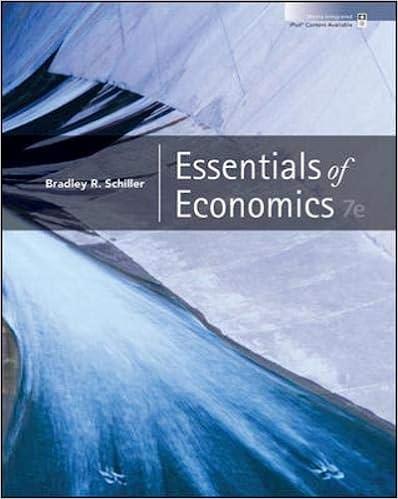8 0 / 1 point Your neighbor is a second-grader who sells lemonade on a street corner in your neighborhood. Each cup of lemonade costs her $0.10 to produce; she has no fixed costs. The reservation prices for the 10 people who walk by her lemonade stand each day are listed in the table below. Your neighbor knows the distribution of reservation prices (that is, she knows that one person is willing to pay $0.50, another $0.45, and so on), but she does not know any specific individual's reservation price. Therefore, she cannot price-discriminate. Calculate total revenue and marginal revenue. Reservation Quantity Total Marginal Price Revenue Revenue 0.50 1 0.45 2 0.40 3 0.35 4 0.30 5 0.25 6 0.20 0.15 8 0.10 9 0.05 10Given that she is not a price discriminator and that her marginal cost is $0.10, her prot-maximizing quantity is cups and her prot maximizing price is $ -. At that price and quantity, her daily producer surplus is $ a day and consumer surplus is $ 3 day. Therefore, total economic surplus is $ - To calculate consumer surplus, nd the difference between marginal willingness to pay and price for each unit sold, and add up this difference over all of the units sold. To calculate producer surplus, nd the difference between price charged and marginal cost for each unit, and add this difference up over all units. 19 0 / 1 point Your neighbor is a second-grader who sells lemonade on a street corner in your neighborhood. Each cup of lemonade costs her $0.10 to produce; she has no fixed costs. The reservation prices for the 10 people who walk by her lemonade stand each day are listed in the table below. Your neighbor knows exactly how much each person in the neighborhood is willing to pay. She knows every individual's reservation price. Therefore, she is able to price-discriminate. Reservation Price Quantity 0.50 1 0.45 2 0.40 3 0.35 4 0.30 5 0.25 6 0.20 7 0.15 8 0.10 9 0.05 10Given that your neighbor is able to perfectly price discriminate, she will produce cups of lemonade per day. Total consumer surplus will be $ (this is really easy, no calculation needed). Total producer surplus will be $ - Therefore, total economic surplus is $ - To calculate producer surplus, nd the difference between price charged and marginal cost for each unit, and add it up over all units










